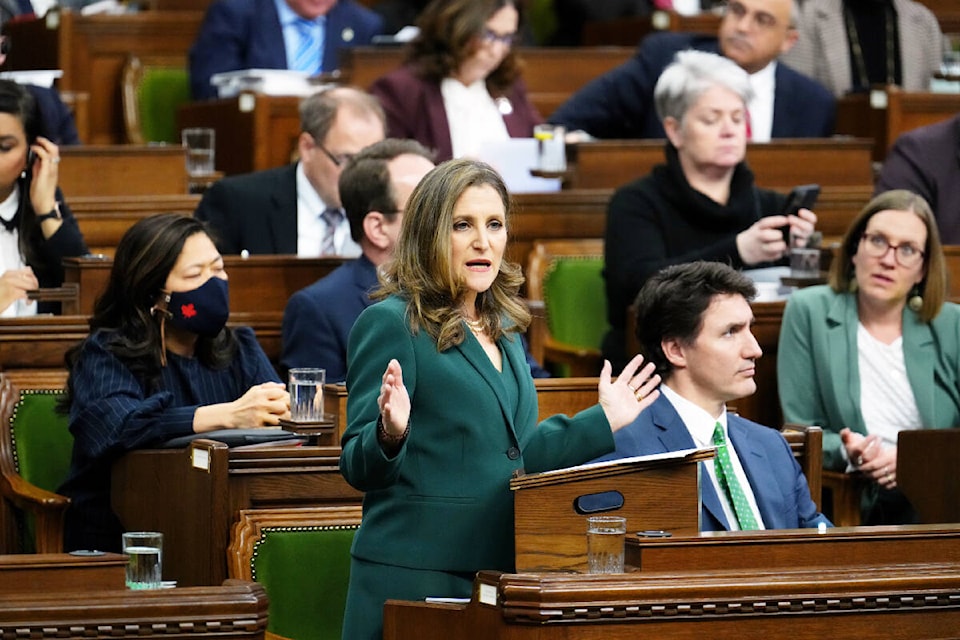Last week’s 270-page federal budget only mentioned the Yukon five times, four times around contaminated site programs plus one rhetorical flourish about “sweeping Yukon vistas.”
But it did include the word ‘Atlin’.
This was in the chapter about the new investment tax credit for clean electricity. This gives a 15 per cent refundable tax credit if you build any of a wide range of electricity generation projects, including wind, solar, small and large hydro, small modular nuclear reactors and LNG-fired power plants (as long as the latter capture the carbon they emit). Batteries, pumped hydro storage and transmission lines between provinces and territories also qualify. A separate 30 per cent tax credit applies to geothermal.
Importantly, the tax credit is set up so that government-owned companies such as Yukon Energy and First Nations development corporations can benefit (which, as tax lawyers will tell you, is not the case with all tax credits).
The tax credit’s immediate effect could be to fill part of the yawning gap that has emerged in the Atlin Hydro Expansion Project’s financials. As reported in the Yukon News last November, the project was originally billed at $120.7 million, including the transmission line to Jakes Corner, but has now ballooned to over $300 million. In February 2022, Yukon Energy said the 31-gigawatt-hour project would eliminate the need for four of the rental diesels parked by Yukon Energy headquarters.
In the longer term, the tax credit could spark a rethink of the Yukon government’s approach to electricity.
Currently, the Yukon uses about 400 gigawatt-hours of electricity in a year. The population is forecast to grow about two per cent per year. Forecasting future power growth is more complicated than just growing 400 gigawatt-hours by two per cent a year. We may get new mines. The government is actively encouraging people to shift to electric vehicles and electric heat. Indeed, most new homes are now electrically heated, as we were reminded during December’s prolonged outage in Whistlebend.
The International Energy Agency expects that in order to achieve net-zero carbon emissions by 2050, Canada will need two to three times more renewable power than it does today.
The figure for the Yukon is probably similar, or perhaps higher given our fast-growing population and how much heating oil and propane we burn for winter heat.
You can immediately see the challenge. The 31-gigawatt-hour Atlin project boosts our 400-gigawatt-hour power base by less than 10 per cent. If we will need double or triple by the late 2040s, we need to be building a project the size of Atlin roughly every two years.
There are many reasons why Yukon electricity projects always seem to get hopelessly tangled in the buckbrush. One is the traditional planning approach, where the government reviews options and chooses a single site, has lots of meetings with the feds seeking cash, then finally puts it out for public comment. The result is often a coalition of surprised First Nations, worried environmentalists and angry NIMBYists that bogs down the project.
Since the federal tax credit applies to First Nations development corporations and so many different electricity technologies, a new approach is possible. It would work like this.
First, the Yukon government would announce that it plans a decade-long program to build a certain, large number of gigawatt-hours. The forecasters would need to figure out what this number is, but it might be in the 100-150 gigawatt-hour range. The government would build a meaningful amount of money, tens of millions each year, into its capital budget.
Second, the government would launch a series of Requests for Proposals (RfPs). These would be open to any bidding consortium, as long as it was led by or included a First Nation partner. The bidders would pitch projects with whatever combination of size, location, technology, government subsidy request and minimum power price they thought would work.
You would open the process for RfPs in waves every few years, and have an independent expert panel to review the submissions. Each wave would have two stages: expressions of interest, then after screening out the less attractive bidders, a final stage.
Yukon Energy would be allowed to bid, to boost competitive pressure on the other bidders and make sure there was a public option if the private sector came in too expensive.
The independent panel would recommend the best proposals to the government based on their power generation, cost and risk. The risk assessment would include technical, economic and legal-regulatory likelihood to succeed.
Third, the government would ensure YESAB and other regulatory agencies had mandates to treat power projects as priorities and enough resources to do so. This does not mean waving them through the regulatory pylons, but making sure the agencies are doing their work in a timely fashion. This would be similar to Australia’s approach for projects of national significance.
It is likely the federal funding aspect will be faster in the future. Instead of a lengthy process pitching projects, lobbying ministers’ offices and negotiating with officials, the feds are likely to say, “Our contribution is the already-approved tax credit. Good luck with your project.”
This process would spark the creativity and entrepreneurialism of Yukoners. The projects most likely to succeed would be those that had roots in Yukon communities and First Nations. If First Nations and other Yukoners in one part of the territory did not want windmills or micro hydro, the power projects — and government cash and job opportunities — would get built somewhere else.
If it doesn’t work, we are no worse off than we are now. We would still have what is effectively our current backup plan: Yukon Energy installs a small nuke, like the one planned for Fairbanks, in the Faro open pit around 2035.
Keith Halliday is a Yukon economist, author of the Aurore of the Yukon youth adventure novels and co-host of the Klondike Gold Rush History podcast. He won the 2022 Canadian Community Newspaper Award for Outstanding Columnist.
